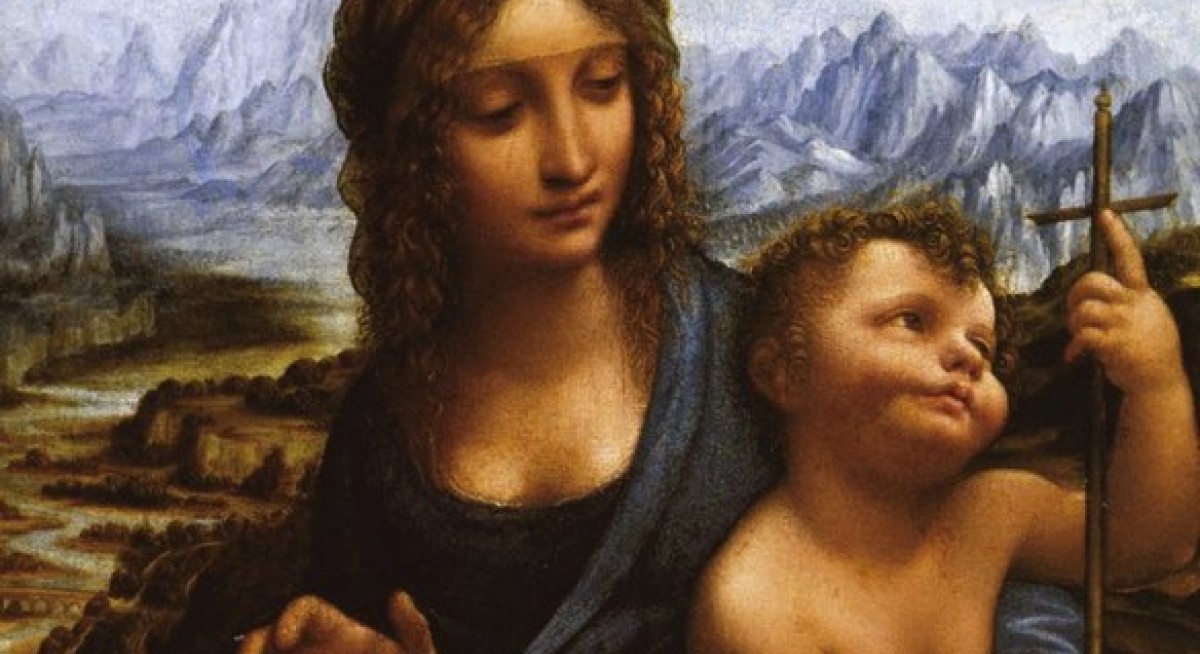Scholars believe one of the paintings was commissioned by Florimond Robertet, a top administrator in the court of King Louis XII of France, before da Vinci left Milan in 1499. The other painting remained in the artist’s studio and was listed in its inventory after his death, Kemp said. “Technical analysis shows that Leonardo worked simultaneously on both pictures,” said Kemp, who authored several books about the painter, including one about the Yarnwinder Madonnas. “We can see from the under-drawings that he was very actively involved. The hair, the moist eyes—we can tell it was Leonardo.” The main difference between the two versions is the background: The Buccleuch Madonna features a seascape with an island; the Lansdowne, an Alpine range. The rock formation in the foreground of the Buccleuch is painted with a deep knowledge of geology, said Kemp. On the other hand, the mountains in the Lansdowne painting are “very Mona Lisa-like.” Murky Authorship
The Madonna of the Yarnwinder entered the Buccleuch family collection in 1767, with the marriage of the third duke to Lady Elizabeth Montagu, who inherited a substantial art collection from her parents, the Duke and Duchess of Montagu, according to the museum. They had purchased the painting at auction in Paris in 1756. While it is attributed to da Vinci at the National Galleries of Scotland, the museum acknowledges that his direct involvement has been debated.
No more than 20 paintings attributed to da Vinci have survived, and both Yarnwinder Madonnas “fit in between 15 and 20,” Simon said. “It depends on who you ask and how you define authorship.” How the subtleties of attribution would impact the price should either work ever come to the market is an open question. Experts agree that each would command extraordinary prices, though unlikely as high as that of Salvator Mundi, which was acquired by the Abu Dhabi Department of Culture and Tourism for the emirate’s new Louvre Abu Dhabi museum. Otto Naumann, an Old Master dealer in New York, said either painting could draw US$150 million or $200 million following the historic sale of Salvator Mundi on Nov. 15. “I joked to Francois,” Naumann said, referring to Francois de Poortere, head of Christie’s Old Masters department, whose client was the underbidder for Salvator Mundi, “why don’t you get both of them in the same auction?” Some scholars believe a third exists—also privately owned. Carlo Pedretti even put it on the cover of his 2014 book, The Yarnwinder Madonna of Leonardo Da Vinci: The Three Versions for His First French Commission (CB Edizioni; bilingual edition, 2014).








